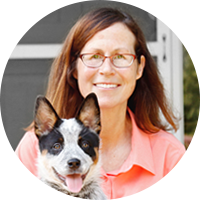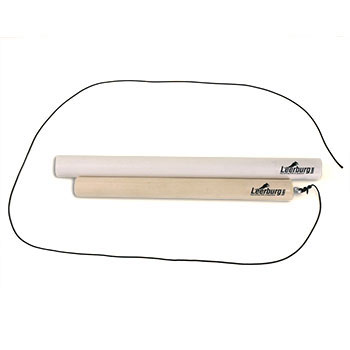May 11, 2011
I have a 2-year-old neutered male sheltie. He has a lot of drive and he is impatient and does everything fast and
Full Question:
I have a 2-year-old neutered male sheltie (neutered shortly before his second birthday, a couple months ago). He has a lot of drive and he is impatient and does everything fast and "frantic." I have been training him in agility since he was 9 months old along with obedience, i.e. heeling, come front, sit, etc. He is smart and can do things with "half a brain" and will, if allowed, do things half assed. He has been marker trained. Once I finally realized that he was being sloppy (heeling and fronts) because he was only using "half a brain and doing it half assed" and it was not because he did not know how, (out of frustration and not knowing what else to do), I have been using a slip collar and corrections to maintain criteria. The more you work him, the higher he gets, and it takes only a few times for him to get really high. When using the marker, he can get really high. When sitting at the start line for agility, he is very antsy to start, dances his front feet up and down or crouches with one foot up ready to take off. He has very low frustration tolerance which seems to be getting lower as he gets higher, and this leaking out into what appears to be the beginning of spinning (I immediately down him before he gets a chance). I want him to have a proper frustration tolerance and be able to maintain his drive without his brain going out the window. What is it I am doing wrong and what should I be doing?Thank you for your help,
Chris

 Cindy's Answer:
Cindy's Answer:
You need to back up and take him out of the situations that overload him. This may mean not actually doing agility for a while, until he can focus and control his impulses. The more you keep putting him in this situation and let him rehearse these behaviors, the worse it will get.
If you can’t hold a sit stay at the start line with your criteria in place, then move him out of the ring, or move him out of the room or out of the building and find the “bubble” where he can do it right and reward. Move closer in increments, always being aware of your criteria. I see this a lot in people who train agility dogs, they get impatient to run the dog on the course and allow a lot of leaky behavior to slip by.
It may take weeks or months to get what you want in the environment you need to work this dog in. Patience and persistence is the key. If you give up and let the dog practice the old behaviors, it will only reinforce the old behaviors. I’d start small and reward any good step in the right direction.
Cindy Rhodes
If you can’t hold a sit stay at the start line with your criteria in place, then move him out of the ring, or move him out of the room or out of the building and find the “bubble” where he can do it right and reward. Move closer in increments, always being aware of your criteria. I see this a lot in people who train agility dogs, they get impatient to run the dog on the course and allow a lot of leaky behavior to slip by.
It may take weeks or months to get what you want in the environment you need to work this dog in. Patience and persistence is the key. If you give up and let the dog practice the old behaviors, it will only reinforce the old behaviors. I’d start small and reward any good step in the right direction.
Cindy Rhodes
User Response:
Thanks so much for writing back. I guess I'm on the right track as that is what I had started doing with him a couple weeks ago. I've never had a sheltie like him before and am certainly learning a lot from him. I am learning to pay attention to more minute details in criteria, including during the time I reward him, withdrawing the reward if he breaks criteria. Chris
100% (2 out of 2)
respondents found this answer helpful


Can't find what you're looking for?







